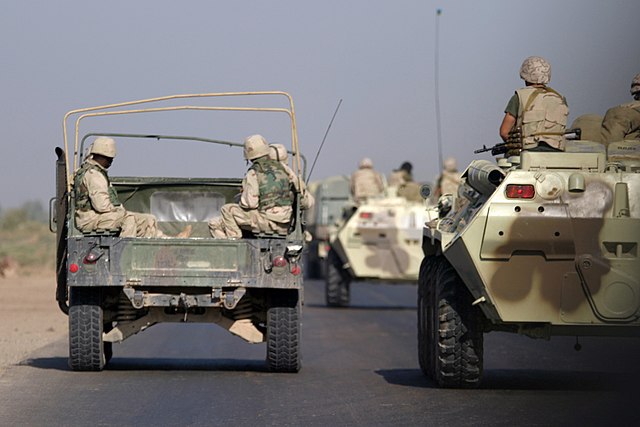Russia’s decision to invade Ukraine has proven to be one of the most diplomatically complex events of the 21st century. Countries external to the conflict seem to be torn between simply condemning Russia’s actions through economic sanctions and responding more directly with military aid and intervention.
On Feb. 27, in a pivotal moment, German Chancellor Olaf Scholz announced that Germany would be sending thousands of weapons to aid the Ukrainian war effort against Russian aggression, abandoning its historically military-averse stance in foreign conflicts.
After more than 50 years of remaining neutral and attempting to distance itself from conflicts — in part due to the horrors of the Third Reich regime that led to World War II — Scholz’ speech on Feb. 24 reinforced Germany’s commitment to maintaining the post-World War II order in Europe.
However, with Russia’s blatant act of aggression, Scholz had no choice but to completely pivot from Germany’s neutral policy in order to aid Ukraine. This shift is all the more significant when considering that many EU countries’ arms stockpiles are mainly manufactured in Germany. Due to military trade deals and Germany’s past policy restrictions, these countries require Berlin’s approval to send German-manufactured arms to Ukraine.
Estonia is one such country that was unable to send military assistance to Kyiv due to a lack of German approval. However, Berlin’s move to send its own arms to the warzone signaled to other European countries in possession of German arms stockpiles that they were free to send them as well. This, in turn, meant that Ukraine would be more likely to receive widespread military assistance from EU countries — something that Russia sought to avoid by denying Ukraine admission into NATO.
Germany’s pacifism in relation to global, and particularly European, conflicts has been a firm and long-standing pillar of German foreign policy since the end of World War II.
However, the war in Ukraine was such a flagrant dismissal of Ukrainian sovereignty that the decision to send lethal arms was supported by a united front across the German political landscape. In fact, as one of the first countries to declare material support for Kyiv in its defense against the Russian invasion, Germany placed itself at the forefront of the Ukrainian line of defense, ahead of even the United States. In doing so, Germany sent a strong message to Russia about its dedication to uphold state sovereignty across Europe.
Germany’s decision to ship arms to the Ukraine-Russia conflict zone appears to have been the stimulus for a policy shift across the EU. Just one day after Scholz’s announcement, the EU declared it would be shifting its strategic stance and sending military aid to Ukraine. This act defied its decades-long position of restricting funding for foreign conflicts. EU Commission President, Ursula von der Leyen, deemed the announcement a “watershed moment,” which only goes to highlight the global collective shock at Russia’s unprovoked invasion.
Along with EU countries, the United States has also found itself in the position of arms dealer to the Ukrainians. On March 17, President Joe Biden signed an $800 million arms package that included a variety of weapons from drones to Stinger missiles to portable anti-tank and anti-aircraft weapons.
As the Russo-Ukrainian war wages on, the German government has also informed Kyiv that only a portion of the arms shipment would be coming from the German military itself. In order to “ensure national and alliance defense” by maintaining a substantial stockpile of weapons, German defense minister Christine Lambrecht indicated that future arms shipments to the warzone would likely originate within the private arms industry. According to German government sources, the Ukrainian government has already solicited an offer from a German arms maker, though the exact terms of this deal are still unknown.
With all of this artillery flowing into Ukraine from Europe and the West, the question remains: will these arms be enough to hold off the Russian invaders?
It is becoming increasingly clear that for President Vladimir Putin, the bloodshed in Ukraine is more than an attempt to expand Russia’s territorial influence. On April 12, Putin claimed “[Moscow] didn’t have a choice” and that it “was the right decision”. The Kremlin has also alleged genocide of Russian-speaking individuals in eastern Ukraine and Putin has insisted that the war will go “until its full completion.” These are disturbing statements – especially in light of the fact that Ukrainian and Russian leaders had initiated peace negotiations in Turkey.
If Russia refuses to back down, offensive weapons may not help if Ukraine’s limited military force dwindles. Currently, it seems as if countries are using a step-by-step approach of providing aid to the victim in this conflict – all the while attempting to avoid sending their own military personnel to the area. However, how much time will elapse before Western countries revisit the idea of direct military intervention? If that happens, countries will have to evaluate if the world is ready for that kind of war.R







